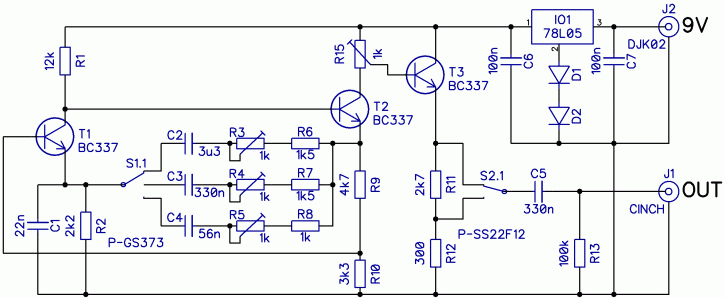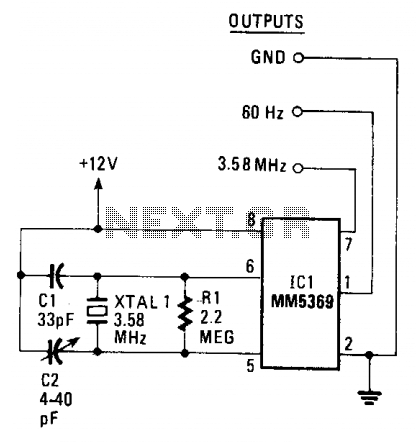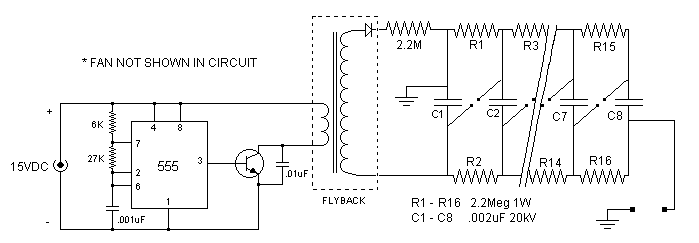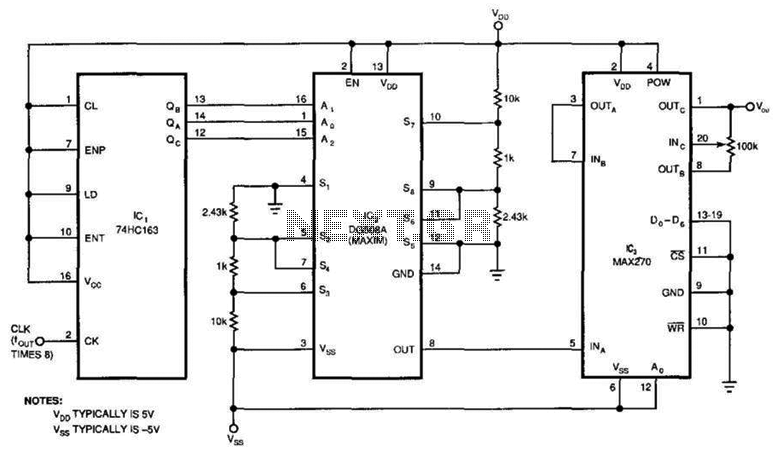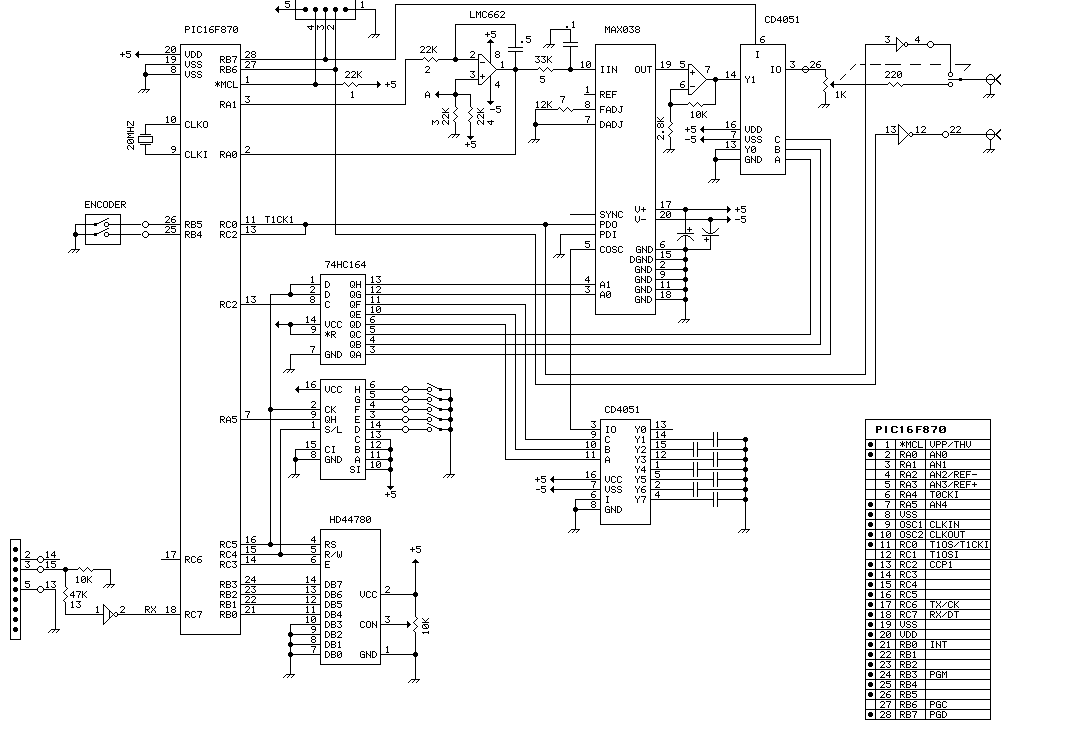
A sine-cosine generator
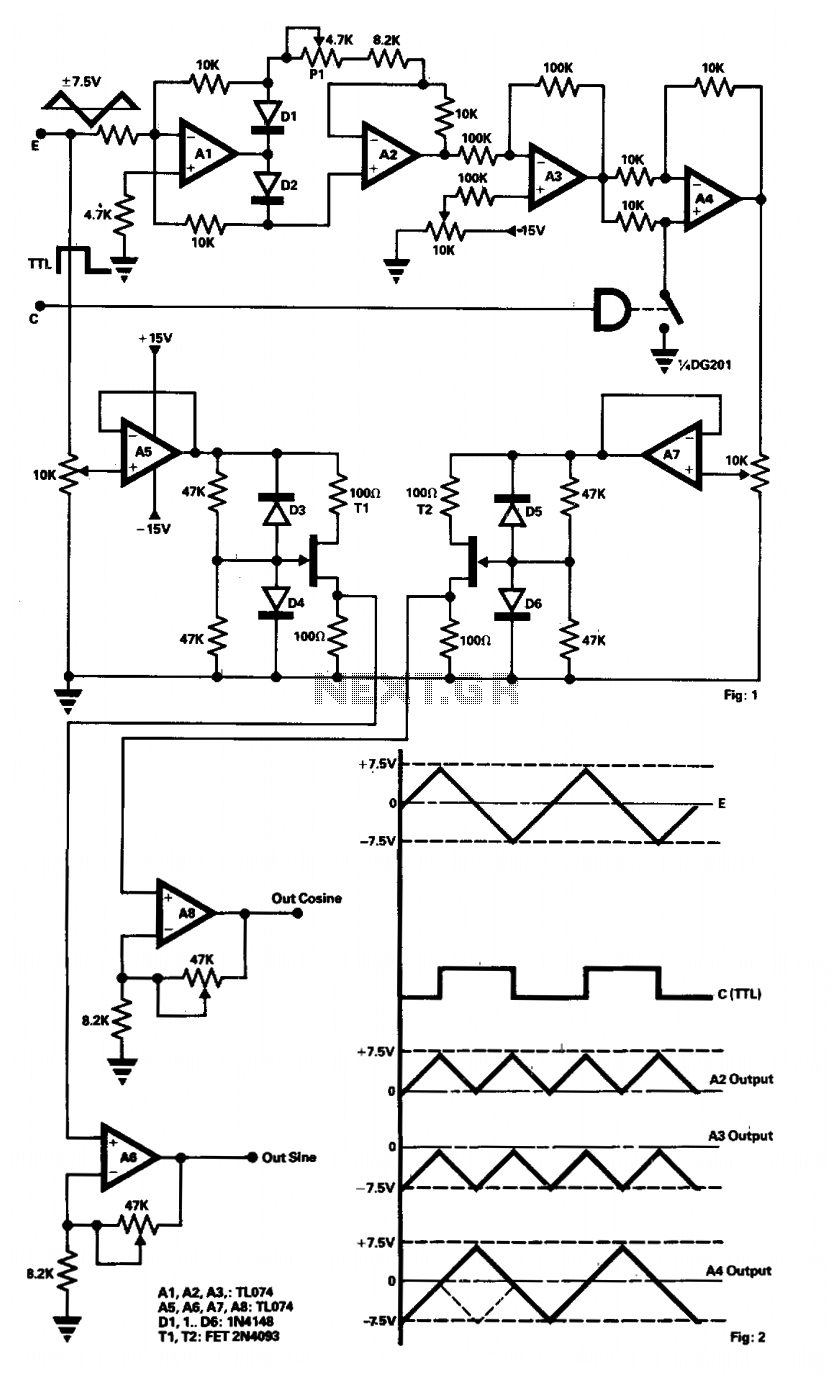
The presented circuit generates waveforms from any function generator that produces a triangular output and a synchronized TTL square wave. Amplifiers A1 and A2 function as a two-phase current rectifier by inverting the negative voltage at the input of A1. For positive inputs, both A1 and A2 operate as unity gain followers, with diodes D1 and D2 in the off-state. For negative inputs, A1 has a gain of -2 (with D1 off and D2 on), while A2 has a gain of +Vi, resulting in a total voltage transfer of -1 between the output and input. The potentiometer PI allows for fine-tuning of the -1 gain for negative input signals. Amplifier A3 adds a continuous voltage to the rectified positive signal to drive A4, which acts as a ± multiplier controlled by the TTL input via an analog switch. The signal polarity is reconstructed, and the output of A4 produces a triangular waveform that is phase-shifted by 90° relative to the input signal. The original and shifted voltages are then sent to triangle-to-sine converters through A5 and A7, which serve as impedance converters. Across a frequency range from 0.1 Hz to 10 kHz, the phase shift remains constant, and the distortion in the sine voltage is less than 1%.
The circuit design incorporates several key components to achieve precise waveform generation and manipulation. The operational amplifiers A1 and A2 are critical in ensuring that both positive and negative input signals are appropriately handled. Their configuration as unity gain followers for positive signals ensures that the output faithfully follows the input without amplification, while the specific gain settings for negative signals allow for effective rectification and inversion.
The use of diodes D1 and D2 plays a significant role in controlling the flow of current during the rectification process. When operating in their respective states, these diodes ensure that only the desired portions of the input waveform are processed, contributing to the overall efficiency of the circuit.
The potentiometer PI serves as a valuable tool for adjusting the gain of the negative signals, allowing for fine-tuning of the output characteristics to meet specific application requirements. This capability is essential in applications where precise signal control is necessary.
Amplifier A3's function of adding a continuous voltage is pivotal in preparing the signal for A4, which acts as a multiplier. The analog switch controlled by the TTL input allows for dynamic control of the output waveform, making the circuit versatile for various applications.
The final output from A4, which is a triangular waveform phase-shifted by 90°, is crucial for applications that require synchronized signals. The triangle-to-sine converters A5 and A7 further enhance the circuit's functionality by transforming the triangular waveform into a sine wave, maintaining a low distortion level of less than 1% across a wide frequency range. This ensures that the output waveform is suitable for high-fidelity applications, such as audio signal processing or modulation schemes in communication systems. The overall design emphasizes stability and precision, making it an effective solution for generating and manipulating waveforms in electronic applications.The scheme presented delivers waveforms from any function generator producing a triangular output and a synchronized TTL square wave. A1 and A2 act as a two-phase current fectifier by inverting the negative voltage appearing at the input of Al.
Positive input: Both Al and A2 work as unity gain followers,D1 and D2 being in the off-state. Negative input: Al has a - 2/s gain (D1 off and D2 on), A2 has a + Vi gain and the total voltage transfer is -1 between output and input. PI allows a fine trimming of the -1 gain for the negative input signals. A3 adds a continuous voltage to the rectified positive signal in order to attack A4 which acts as a ± multiplier commanded by the TTL input through the analog switch.
The signal polarity is reconstructed and the output of A4 delivers a triangular waveform shifted by 90° with respect to the input signal, Fig. 2. The original and the shifted voltages are fed into the triangle to sine converters through A5 and A7 working as impedance converters.
Over the frequency dynamic ranges from 0.1 Hz to 10 kHz, the phase shift is constant and the distortion on the sine voltage is less than 1%. 🔗 External reference
The circuit design incorporates several key components to achieve precise waveform generation and manipulation. The operational amplifiers A1 and A2 are critical in ensuring that both positive and negative input signals are appropriately handled. Their configuration as unity gain followers for positive signals ensures that the output faithfully follows the input without amplification, while the specific gain settings for negative signals allow for effective rectification and inversion.
The use of diodes D1 and D2 plays a significant role in controlling the flow of current during the rectification process. When operating in their respective states, these diodes ensure that only the desired portions of the input waveform are processed, contributing to the overall efficiency of the circuit.
The potentiometer PI serves as a valuable tool for adjusting the gain of the negative signals, allowing for fine-tuning of the output characteristics to meet specific application requirements. This capability is essential in applications where precise signal control is necessary.
Amplifier A3's function of adding a continuous voltage is pivotal in preparing the signal for A4, which acts as a multiplier. The analog switch controlled by the TTL input allows for dynamic control of the output waveform, making the circuit versatile for various applications.
The final output from A4, which is a triangular waveform phase-shifted by 90°, is crucial for applications that require synchronized signals. The triangle-to-sine converters A5 and A7 further enhance the circuit's functionality by transforming the triangular waveform into a sine wave, maintaining a low distortion level of less than 1% across a wide frequency range. This ensures that the output waveform is suitable for high-fidelity applications, such as audio signal processing or modulation schemes in communication systems. The overall design emphasizes stability and precision, making it an effective solution for generating and manipulating waveforms in electronic applications.The scheme presented delivers waveforms from any function generator producing a triangular output and a synchronized TTL square wave. A1 and A2 act as a two-phase current fectifier by inverting the negative voltage appearing at the input of Al.
Positive input: Both Al and A2 work as unity gain followers,D1 and D2 being in the off-state. Negative input: Al has a - 2/s gain (D1 off and D2 on), A2 has a + Vi gain and the total voltage transfer is -1 between output and input. PI allows a fine trimming of the -1 gain for the negative input signals. A3 adds a continuous voltage to the rectified positive signal in order to attack A4 which acts as a ± multiplier commanded by the TTL input through the analog switch.
The signal polarity is reconstructed and the output of A4 delivers a triangular waveform shifted by 90° with respect to the input signal, Fig. 2. The original and the shifted voltages are fed into the triangle to sine converters through A5 and A7 working as impedance converters.
Over the frequency dynamic ranges from 0.1 Hz to 10 kHz, the phase shift is constant and the distortion on the sine voltage is less than 1%. 🔗 External reference
